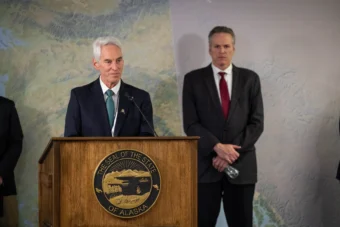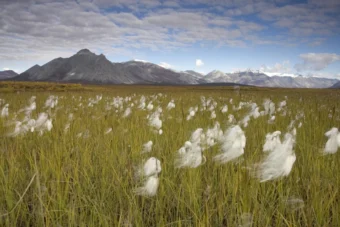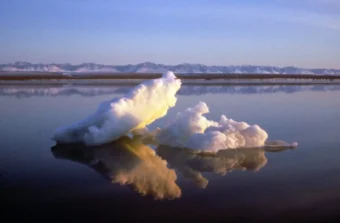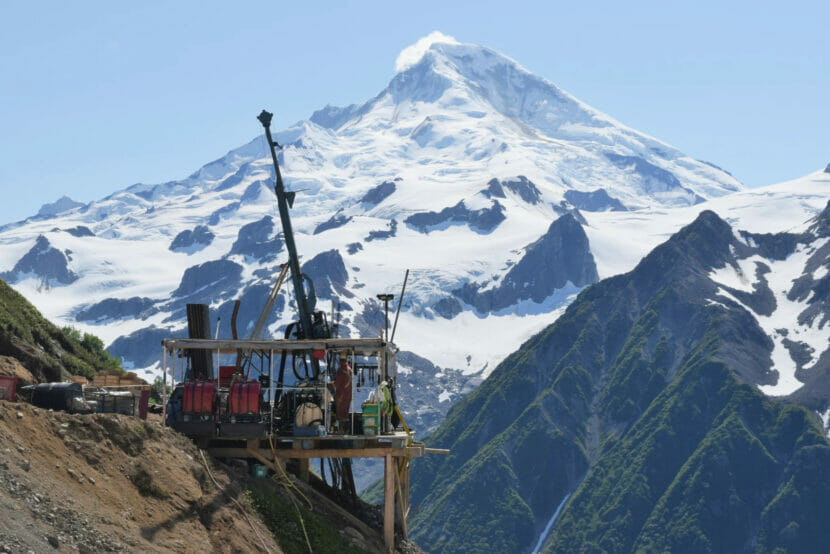
Plans to build an underground gold mine at the base of Mt. Iliamna have been in the works since the 1980s. Now, a Canadian mining company and the Alaska Native corporation that owns the land are in the advanced stages of exploring the area to see if it could be a viable project.
While HighGold, the mining company, says they’ll be careful about potential development on the land — which is inside a national park — not everyone is convinced. Although the project is still in early stages, environmental groups and the owners of the nearby historic cannery are raising red flags.
The site of the proposed project, called the Johnson Tract mine, is located 10 miles inside the boundary of Lake Clark National Park and Preserve, on the west side of Cook Inlet, on a 20,000-acre parcel of land owned by the Cook Inlet Regional Native corporation, or CIRI. The corporation picked that plot in a 1976 land exchange because of its resource extraction potential and benefit to shareholders.
Darwin Green is the CEO of HighGold. He said even though his company knows the tract contains rich deposits of gold, copper and zinc, it’s doing studies now to see whether the project makes economic sense. Deposits there were found decades ago.
“It was discovered in the early 1980s, and then advanced through the mid-1990s,” Green said. “There was an operator at that time that had a mine project elsewhere, and they were looking at just shipping the ore to that site to mill it and process it there. And that’s where it stopped, and it sat idle for 25 to 30 years until CIRI approached our management group.”
The project site is remote, and HighGold is applying for a permit to build an airstrip and an inland road that would connect the airstrip to the site. The company estimates the earliest it would begin underground exploration is 2025.
So far, the project has generally flown under the radar while more high-profile Alaska mine prospects, like Pebble Mine, have had the spotlight. Unlike the controversial Pebble project, Johnson Tract would be underground, not an open pit mine, which can release contaminants into the water and damage salmon habitat.
But local environmental groups have been keeping an eye on the project for a while now — including Homer environmental nonprofit Cook Inletkeeper, which first raised concerns about it in 2020.
“To get that ore out, you’re gonna have to go through the park lands, and you’re gonna have to open up the incredibly pristine and scenic and rich fish and wildlife area to industrial development,” said Bob Shavelson, who was Inletkeeper’s director at that time and penned the concerns about the project.
Another group, the National Parks Conservation Association, has been hosting biweekly meetings about the project for months, said Jennifer Woolworth, the Alaska program manager with the association. She said although the meetings were originally a time set aside to talk about Pebble Mine, they’ve evolved into discussions about the potential harms of Johnson Tract.
She said the group is concerned about the impact of possible contamination and the effects of development on local wildlife, including the highly endangered Cook Inlet beluga whale and brown bears. She pointed to research that shows one of the primary causes for brown bear decline is roads built for resource extraction projects.
Shavelson also raised concerns about HighGold because it’s a spinoff of Constantine Metals, the company behind a controversial Haines mining prospect. Many locals have also been rubbed the wrong way by comments CEO Darwin Green made about the state, where he described mining in Alaska as “going into a third world country with low hanging fruit,” but with first world regulations. Green said this quote has been taken out of context, and that he was promoting the high regulatory standards of mining in Alaska as an advantage in, “answering the world’s metal demands for a low carbon future.”
Green said environmental studies will be an important part of the project at every stage, and that the unique location of the project inside the national park is a critical consideration.
“We obviously want to be incredibly good stewards of the land where we operate, it’s part of our culture and philosophy everywhere we’ve been, but probably even more so now, given the optics,” he said. “It’s a really special place out there, and we’re well aware of that.”
Even though the land is inside a national park, it’s available for development because the tract has belonged to CIRI since the 1976 Cook Inlet Land Exchange. After land was allotted to Native corporations during the Alaska Native Claims Settlement Act, CIRI was disappointed with the economic possibilities for the lands they received. They selected this area because of its resource development potential, according to CIRI spokesperson Ethan Tyler.
“CIRI really strikes a balance between preserving its lands for future generations for shareholders and descendants with resource development,” Tyler said. “And the benefits to shareholders and descendants really comes down to sustainable development of resources that provide for the services and distributions that we provide to our stakeholders.”
In a summer job posting, CIRI says the company and Native corporation are prioritizing CIRI shareholders and their descendants for positions with the project.
Green said HighGold is working closely with CIRI to meet their interests, and that it was refreshing to be approached by a Native corporation interested in developing their resources.
“The economic benefits from that development will flow directly to Alaskans, it’s gonna flow really, directly to Indigenous Alaskans who are shareholders, and that’s something to feel good about,” he said. “That’s something Alaska should feel proud about.”
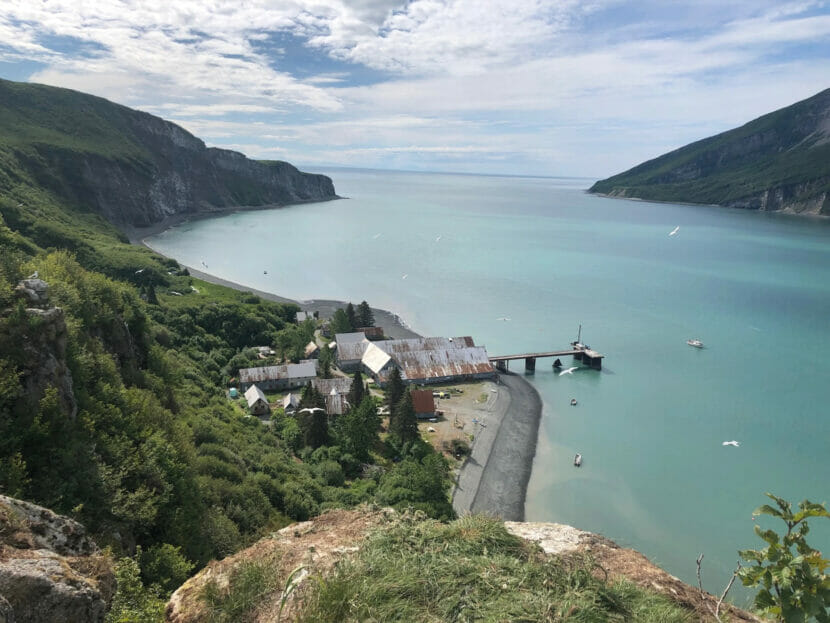
But not everyone is convinced the project would be good for business.
Abe Porter is one of the owners of the old Snug Harbor Cannery on the west side of Cook Inlet.
“My family and I bought it in the early 2000s. I grew up there, my dad grew up there commercial fishing for the cannery, when it was a fully functioning cannery, my grandpa started fishing there in I believe the ’30s,” Porter said.
The cannery opened in the early 1900s and operated first as a razor clam and then salmon cannery until 1980, when it closed and sat vacant for decades. The Porter family has been working to restore the complex over the past 20 years, and recently reopened it as the Snug Harbor Outpost, an ecotourism lodge for visitors interested in bear viewing and fishing off remote Chisik Island.
“We’ve sunk everything into this. It’s my brother and I’s dream,” Porter said.
He said the proposed mine project would directly impact what his family has worked to create at the cannery. He also said the bay is too shallow for large boats, so HighGold would need to build a long dock out into the water of Tuxedni Bay. Green said the project is in too early of the stage to be looking at this type of infrastructure, but confirmed that if HighGold goes through with the mine, a dock or loading facility would be necessary.
Porter is also worried about the fate of commercial salmon fishermen on the west side of the Cook Inlet, and how the mine could impact the value of existing fisheries — regardless of the protections put in place.
“All of the fisheries have a reputation, and that reputation dictates the popularity of it,” he said. “If people hear that there’s a big gold mine, for commercial fishermen the price of fish goes down. For sports fishermen, less people want to come here.”
Proponents of the project say it’s too early to have concerns, since all of its parts and pieces remain hypotheticals, for now. Porter said that’s part of his worry — that the company will keep putting off public concerns until it’s too late to stop the project.
Green said HighGold will continue to study the site and conduct environmental studies there this summer.
